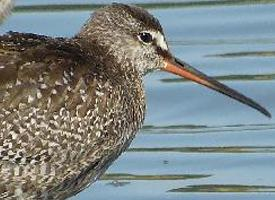
Animal description
The Eurasian woodcock (Scolopax rusticola) is a captivating bird species, belonging to the sandpiper family Scolopacidae. This enigmatic bird is renowned for its cryptic appearance, fascinating behaviors, and unique adaptations that make it a subject of interest among birdwatchers and naturalists alike.Physical Characteristics:
The Eurasian woodcock is a medium-sized wader, measuring approximately 33 to 38 cm in length, with a wingspan of 55 to 65 cm, and weighing between 200 to 400 grams. Its most striking feature is its long, straight bill, which can be as long as 7.5 cm, designed perfectly for probing soft ground in search of food. The bird's plumage is a masterful camouflage, blending seamlessly with the leaf-litter of the forest floor. It exhibits a mottled pattern of brown, russet, and black, making it nearly invisible when motionless. Its eyes are set far back on its head, giving it a wide field of vision, a crucial adaptation for detecting predators while its head is down, foraging.
Habitat and Distribution:
The Eurasian woodcock is a migratory species, with a broad range that covers much of Europe and the northern parts of Asia. It breeds in temperate regions, favoring moist woodlands with dense undergrowth, often near water bodies. In winter, it migrates to warmer climates, including parts of North Africa and southern Europe, seeking milder conditions and unfrozen feeding grounds.
Behavior and Diet:
Primarily nocturnal, the Eurasian woodcock is seldom seen during the day, spending its time hidden among the underbrush. At dusk, it emerges to feed, using its sensitive bill to probe the soil for earthworms, insects, and other invertebrates. Its feeding technique is unique; it performs a distinctive, rhythmic "roding" flight at dawn and dusk during the breeding season, producing a series of croaks and grunts that serve as both a territorial declaration and a mating call.
Reproduction:
The breeding season for the Eurasian woodcock begins in late March and continues through to July. The female constructs a simple nest on the ground, hidden among dense vegetation, where she lays a clutch of 4 eggs. She is solely responsible for incubation, which lasts for about three weeks. Once hatched, the chicks are precocial, able to leave the nest shortly after birth, but remain dependent on the mother for food and protection for the first few weeks of their lives.
Conservation Status:
Currently, the Eurasian woodcock is classified as Least Concern by the International Union for Conservation of Nature (IUCN), indicating that it is not currently at immediate risk of widespread decline. However, habitat loss, changes in agricultural practices, and hunting in some areas pose ongoing threats to its populations. Conservation efforts are focused on habitat preservation and monitoring population trends to ensure this unique bird remains a common feature of its natural landscapes.
In summary, the Eurasian woodcock is a fascinating bird, emblematic of the rich tapestry of avian life that inhabits our planet. Its secretive nature, remarkable adaptations, and the ethereal beauty of its roding flights make it a jewel in the crown of the natural world, deserving of admiration and protection.
Similar Animals
New photos of animals
Top 10 animals
- Dolphin gull (Leucophaeus scoresbii)
- Diana monkey (Cercopithecus diana)
- Moustached guenon (Cercopithecus cephus)
- Galápagos tortoise (Geochelone nigra complex)
- Japanese macaque (Macaca fuscata)
- Stone loach (Barbatula barbatula)
- Russian tortoise (Testudo horsfieldii)
- Greek tortoise (Testudo graeca)
- Common flying dragon (Draco volans)
- Vendace (Coregonus albula)


